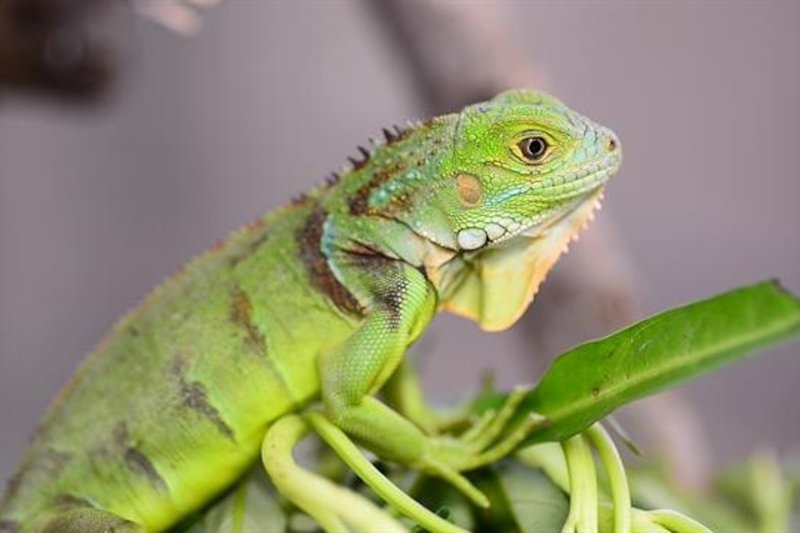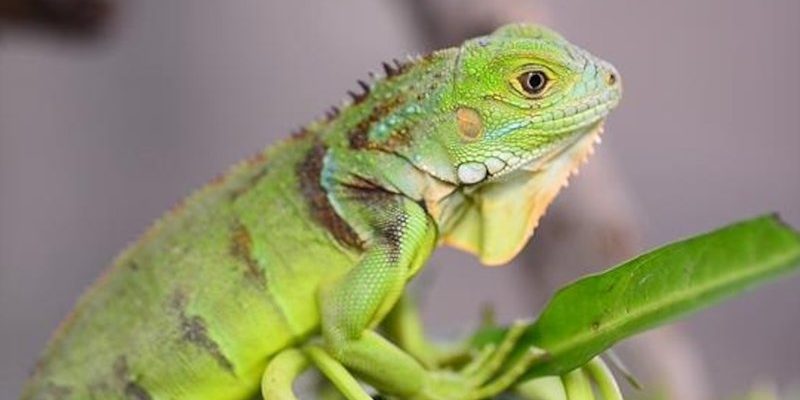
Green iguanas are native to Central and South America, and their habitat covers everything from rainforests to arid areas. They’re like little survivors, adapting to different environments with a level of finesse that’s truly remarkable. So, how do they manage it? Let’s take a dive into their world and explore the incredible ways these iguanas adapt and flourish, even when the going gets tough.
Adaptations to Climate
Green iguanas are champions of adapting to their environment, especially when it comes to climate. In hot conditions, you’ll often find them basking in the sun to absorb heat. But here’s the kicker: they’ve developed a fascinating ability to regulate their body temperature. When it gets too hot, they find shade. It’s like they have a built-in thermostat!
Additionally, during colder months, green iguanas undergo a process called brumation. Think of it as a reptile’s version of hibernation. They slow down their metabolism and retreat to burrows or tree hollows where the temperature is more stable. It’s a clever strategy to conserve energy when food is scarce and temperatures drop.
Diet and Resourcefulness
You might be surprised to learn that green iguanas are mostly herbivorous. They munch on a variety of leaves, flowers, and fruits, which can sometimes be hard to find in harsh environments. However, they can be surprisingly resourceful! When their favorite plants aren’t available, they’ll adapt by consuming whatever is nearby. It’s a way of turning obstacles into opportunities.
Honestly, their ability to browse for food in tough conditions also involves some heavy-duty skills. They know which plants are safe to eat and which ones to avoid. This knowledge is crucial for survival and shows how well-adjusted they are to their environments.
Physical Features for Survival
Green iguanas have some pretty cool physical traits that help them survive. For one, their dewlap, a flap of skin under their throat, serves multiple purposes. It’s not just for show; they use it to regulate temperature and communicate with other iguanas. When things heat up, they can puff out their dewlap to cool off.
Additionally, their long tails help them maintain balance while climbing trees. Ever tried walking a tightrope? It’s kind of like that! Plus, their strong jaws are equipped to handle tough vegetation. With their array of natural tools, it’s no surprise these little guys can thrive where other animals might struggle.
Behavioral Adaptations
You might be wondering how behavior plays a role in a green iguana’s survival. Well, their social behaviors are quite interesting. When faced with predators, they don’t just sit there. Green iguanas have a knack for playing dead or making themselves appear larger. Can you picture that? It’s like a little green magician pulling a disappearing act!
Moreover, they communicate through body language. A quick wave of the tail or a head bob can signal to other iguanas whether it’s time to stay and chat or to escape danger. These behavioral traits not only help them avoid predators but also maintain their social structures within groups.
Water Conservation Techniques
In harsh environments, water can be a serious concern. Green iguanas have developed smart tricks to save water. First off, they can go long periods without drinking. Instead, they extract moisture from the leafy greens they consume. It’s like having your own personal hydration system built right into your diet!
Additionally, they often bask in the sun after rains to absorb humidity, which helps keep their skin hydrated. Think of it as a mini spa day in nature! By effectively managing their water intake, they’re able to survive even in the driest regions.
Predator Evasion Strategies
Living in the wild comes with its dangers, and green iguanas have a few tricks up their sleeves to dodge predators. One of their most effective strategies is their impressive speed. These reptiles can sprint quickly to escape threats, making them hard to catch.
Another surprising tactic is their camouflage. Their green scales blend seamlessly with their leafy surroundings, allowing them to remain unseen by both predators and prey. Imagine being in a game of hide and seek where you’re practically invisible—that’s the life of a green iguana!
Importance of Habitat Preservation
As fascinating as green iguanas are, they face numerous threats, including habitat destruction, climate change, and illegal pet trade. Preserving their natural habitats is crucial for their survival. Think about it: if we want to keep witnessing their incredible adaptations, we need to ensure they have a place to live.
Many organizations are working hard to protect these reptiles and their habitats. Simple actions, like supporting conservation efforts or reducing waste, can help make a difference. Here’s the thing: the future of the green iguana depends on all of us.
When it comes to surviving in harsh environments, green iguanas are true masters. From unique adaptations to clever behaviors, they’ve found ways to thrive against the odds. Each aspect of their survival—be it diet, physical features, or social behaviors—contributes to their resilience.
As you watch these remarkable creatures next time, remember that their abilities are all part of a beautiful survival story. Let’s appreciate and protect them as they continue to adapt and flourish in the wild. After all, the world is a richer place with green iguanas scampering through the trees!

